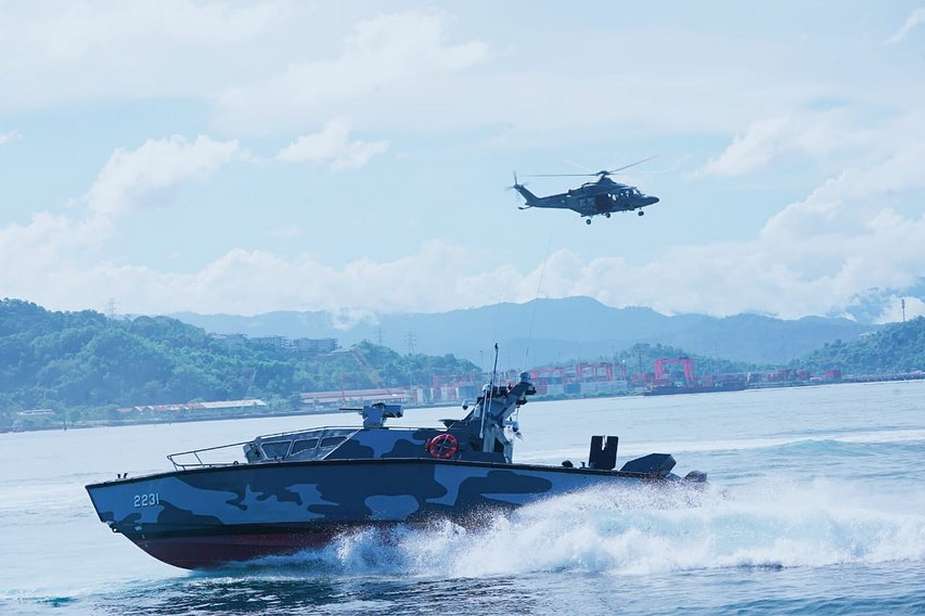Breaking news
Malaysia strengthens Eastern Sabah's security zone with four G2000 Mk II Fast Interceptor Craft.
On February 2, 2024, the Malaysian Ministry of Defense announced the reception of at least four G2000 Mk II Fast Interceptor Craft (FIC) vessels by the Royal Malaysian Navy (TLDM) from the Malaysian company Gading Marine. This procurement is part of Malaysia's efforts to enhance its maritime defense capabilities in the Eastern Sabah Security Zone (ESSZONE), which was established in response to the 2013 Lahad Datu standoff.
Follow Navy Recognition on Google News at this link
 In response to the Lahad Datu incident, Malaysia acquired G2000 Mk II FIC 18m vessels for more effective patrol of Sabah's shallow waters. (Picture source: Malaysia MoD)
In response to the Lahad Datu incident, Malaysia acquired G2000 Mk II FIC 18m vessels for more effective patrol of Sabah's shallow waters. (Picture source: Malaysia MoD)
The procurement initiative involves a total of 13 FIC G2000 Mk II units to be distributed across three phases. The first phase was completed within 16 months in Sitiawan, Perak, and the vessels are now stationed at the Headquarters of the Sea Area 2 (MAWILLA 2) in Sandakan. They are expected to contribute significantly to maritime security operations in East Sabah's waters within the Eastern Sabah Security Zone (ESSZONE).
The ESSZONE was established by Malaysian Prime Minister Najib Razak on March 25, 2013, in response to the security vulnerabilities exposed by the Lahad Datu standoff. This incident emphasized the need for improved maritime surveillance and defense capabilities to counter threats posed by pirates and militants from the southern Philippines. Covering the east coast of Sabah from Kudat to Tawau, the ESSZONE aims to safeguard the region against incursions, ensuring the safety and security of trade and business activities.
Under the leadership of Datuk Seri Musa Aman, the Eastern Sabah Security Command (ESSCOM) serves as the primary enforcement authority within the ESSZONE, demonstrating Malaysia's commitment to addressing external threats and historical territorial disputes with the Philippines over eastern Sabah. The territorial dispute, rooted in the claims of the Sultanate of Sulu and highlighted by the 2013 standoff led by Jamalul Kiram III, has been a focal point of tensions in the region.
In response to the Lahad Datu incident, the Malaysian government identified the need for fast interceptor crafts to patrol Sabah's shallow waters more effectively, leading to the procurement of the G2000 Mk II FIC 18m class vessels. These crafts, designed by New Zealand's LOMOcean Marine and constructed by Malaysia's Gading Marine, feature an aluminum hull, are 18 meters in length, 4.6 meters in beam, and displace about 26 tonnes. Their propulsion system, which includes two MAN V12 diesel engines and two Hamilton HTX42 water jets, allows for a top speed of 50 knots and a range exceeding 350 nautical miles at 35 knots.
The Mk II variant introduces several improvements over its predecessor, including the ability to accommodate additional crew and equipment for enhanced operational flexibility. It features expanded deck space for special forces, a forward position for a crew member and a machine gun mount, and provisions for a long-range acoustic hailing device and a rear gunner for 7.62 mm guns. The vessel can carry a crew of five and seat eight additional personnel, with a ladder at the bow for easy disembarkation and a draught that allows operation close to the coast, even in sandy sea bottoms.
In terms of armament, the G2000 Mk II is outfitted in two configurations: eight vessels are equipped with the Sentinel 2.0 remotely controlled weapon station (RCWS) featuring a 12.7 mm machine gun from Spanish company Escribano, while the remaining boats are to be fitted with the STAMP-L RCWS by Turkish company Aselsan. Furthermore, two 7.62 mm general-purpose machine guns (GPMGs) are installed on pintle mounts at the rear, contributing to the crafts' defensive capabilities.























